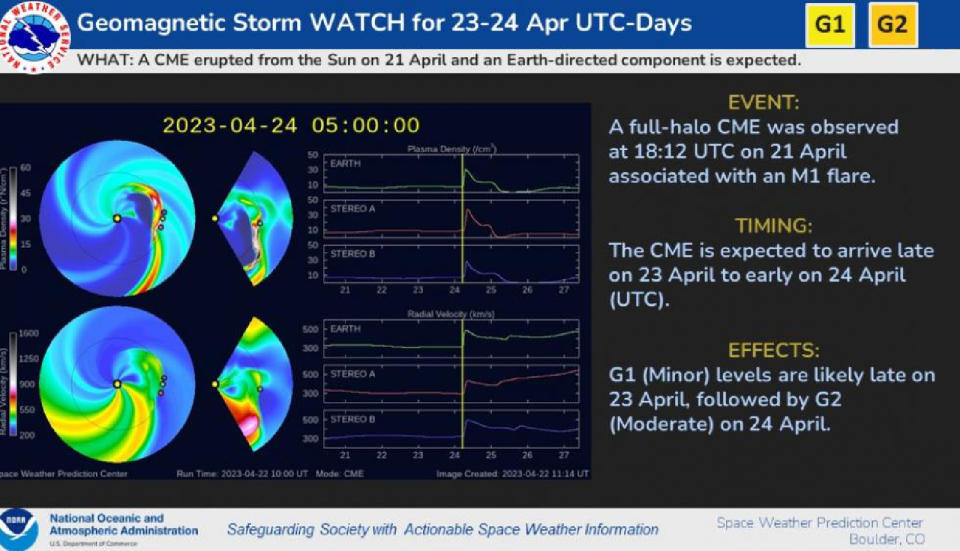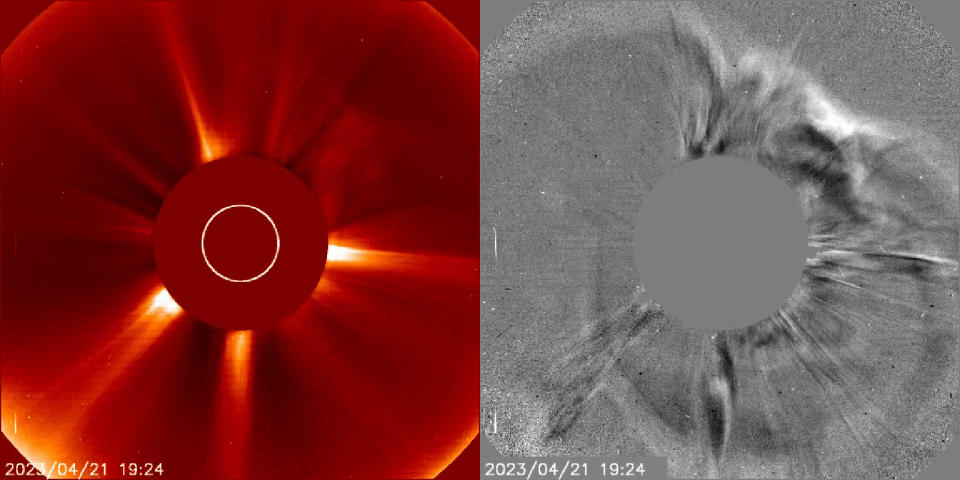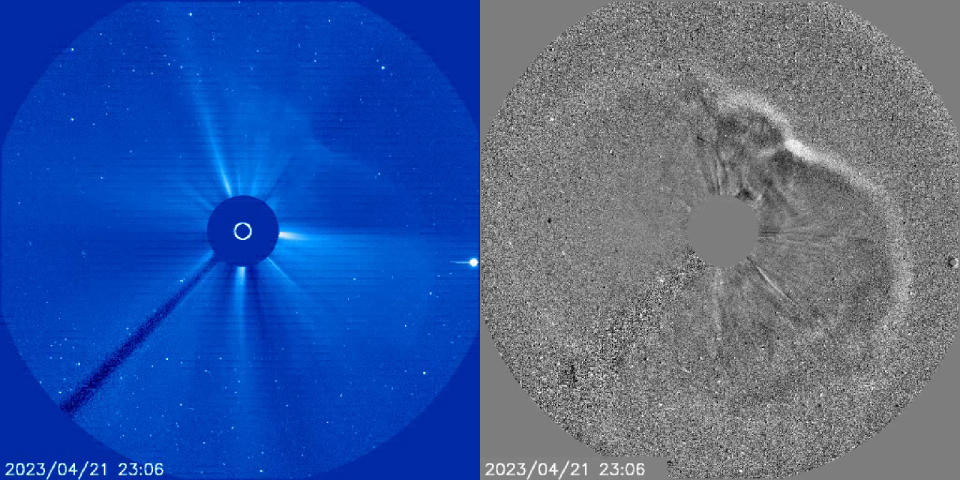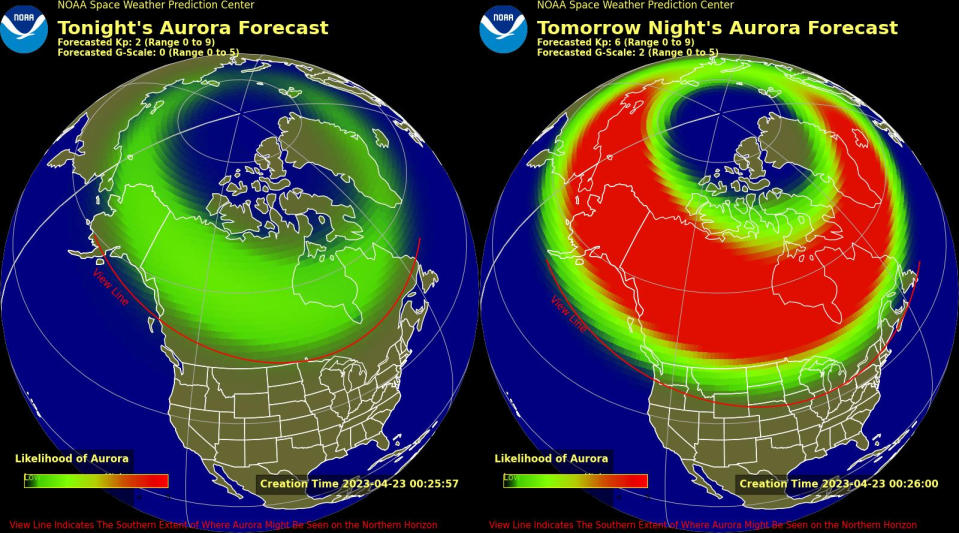Solar storm may spark auroras across Canada tonight

The Sun blasted out an immense 'halo CME' on Friday, and when that cloud of solar plasma sweeps past Earth on Sunday evening it is expected to spark auroras across Canada and the northern United States.
NOAA's Space Weather Prediction Center has issued a Geomagnetic Storm Watch for the evening and overnight hours of Sunday, April 23. According to their forecast, a coronal mass ejection, or CME, was seen erupting from the Sun around midday on Friday, April 21, following a moderately strengthed M1 solar flare.

The Geomagnetic Storm Watch shows the solar storm, aka coronal mass ejection or CME, predicted to reach Earth at roughly 9 p.m. EDT, Sunday, April 23 (05 UTC on April 24). Credit: NOAA SWPC
The eruption expanded outward from the location of the solar flare in a immense cone shape.
To the Solar and Heliospheric Observatory (SOHO), a satellite which keeps a constant watch on solar activity and the Sun's corona, this expanding cloud of plasma appears as an immense ring of bright material, thus the name "Halo" CME.

This 'coronagraph' view from SOHO, taken at 19:24 UTC on Friday, April 21, 2023, shows a close-in look at the Sun's corona (left), and a 'difference' view that subtracts away the background to reveal the structure of the CME (right). The Sun is located behind the blank disk in the middle of each coronagraph view, to block its direct light. Credit: NASA/ESA/SOHO

This wide-view coronagraph from SOHO shows the same halo CME at 23:04 UTC, on April 21, 3 hours and 40 minutes after the close-in shot (above) was taken. The CME is substantially wider. Credit: NASA/ESA/SOHO
Earth is unlikely to be affected by the densest part of the solar storm, which appears to be centered just ahead of Earth in our orbit around the Sun. Still, when the edge of the plasma cloud sweeps past our planet, it is expected to cause a disturbance in Earth's geomagnetic field.
The resulting geomagnetic storm is forecast to be minor, although it could reach moderate levels late Sunday night or very early Monday morning. As a result, we could see auroras farther south than usual.

These two views of NOAA's Experimental Aurora Viewline for Tonight and Tomorrow Night product show the expected extent of auroras on the nights of Saturday April 22, 2023, when no geomagnetic storm was forecast (left), and Sunday, April 23, 2023, with the typical extent of auroras during a G2 (moderate) geomagnetic storm (right). While the band of colour denotes the likelihood of seeing auroras (low = green, red = high), the thin red line plots the likely southernmost extent of their visibility (where they would be visible along the northern horizon). Credit: NOAA SWPC
Although the size and extent of the coronal mass ejection may be
(Thumbnail image courtesy Tree and Dar Tanner, who captured this view of the auroras from central Alberta on March 23, 2023.)

